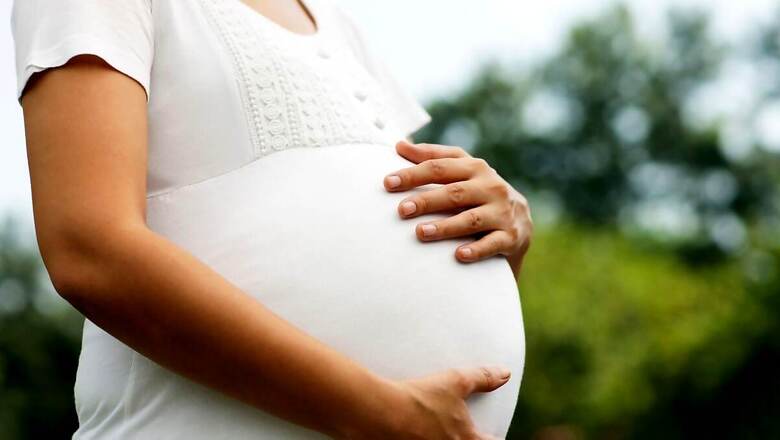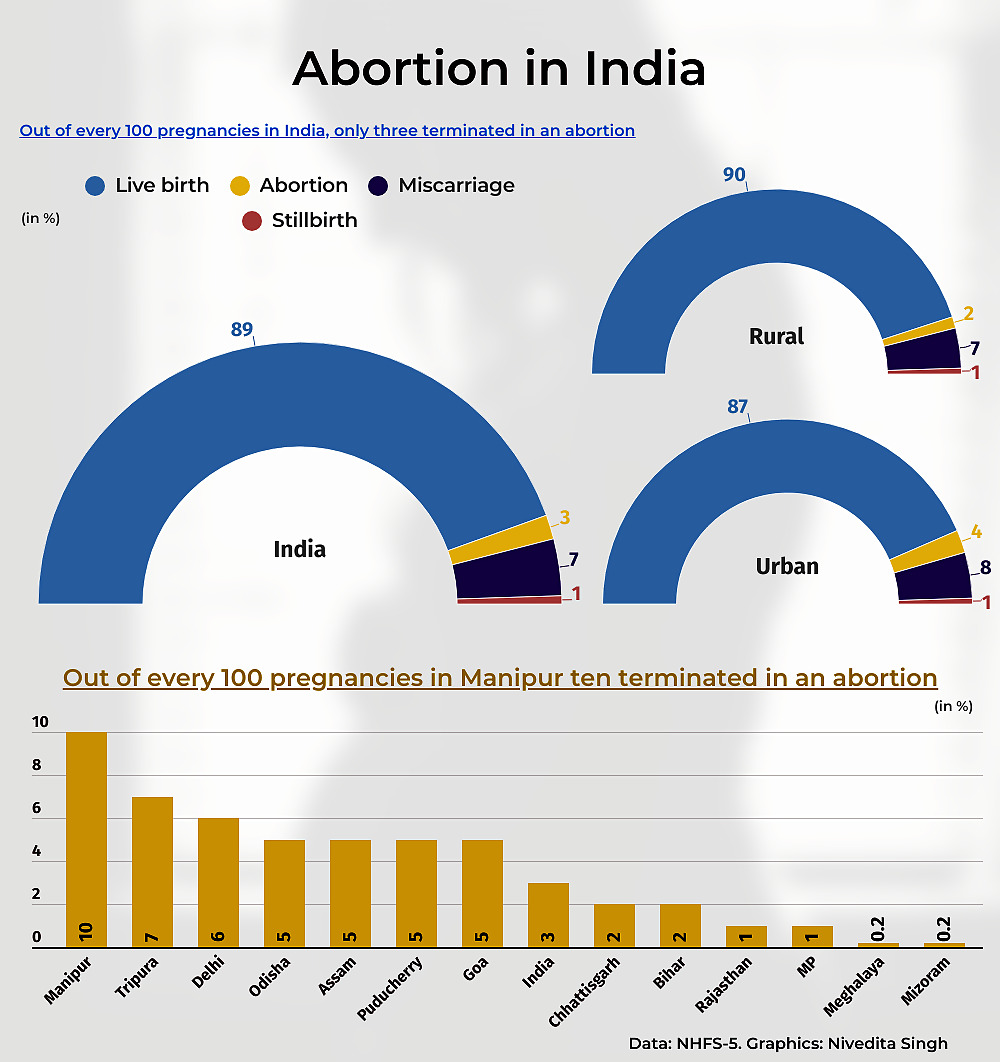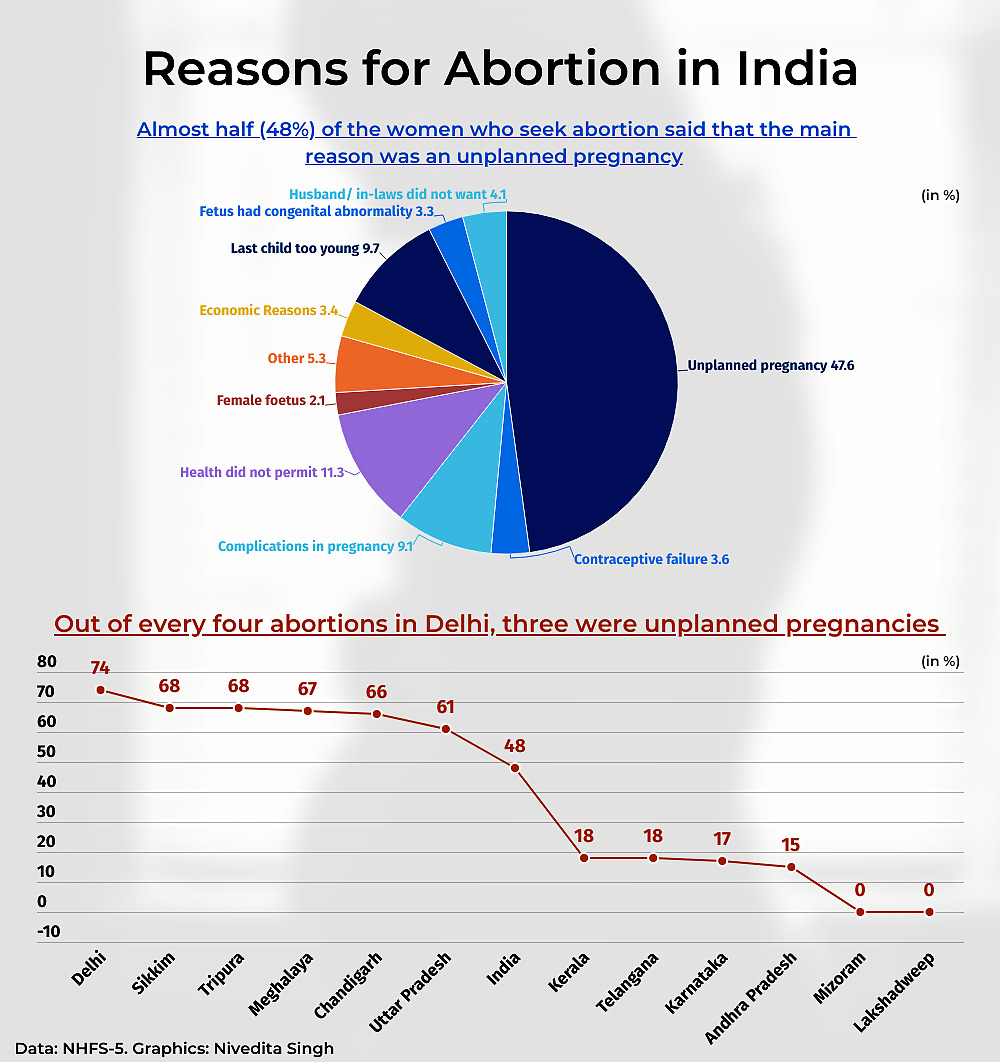
views
As per the National Family Health Survey (NFHS-5), 2019–2021, unplanned pregnancy has been the reason in 48 per cent abortion cases, while in Delhi, it was 73.5 per cent. Delhi scored the highest among the states and Union Territories, followed by Chandigarh at 66.4 per cent. This means, of every 100 abortions in Delhi, about 74 were to terminate unplanned pregnancy. In Chandigarh, 66 of every 100 cited the same reasons.
Unplanned or unintended pregnancies, as the same suggests, are those pregnancies which were unwanted at the time of conception.
The report says that 89 per cent of all pregnancies in the five years preceding the survey ended in a live birth while the remaining 11 per cent terminated in an abortion, a miscarriage, or a stillbirth. Miscarriage is the most common type of non-live birth, accounting for seven per cent of all pregnancies, abortions account for three per cent, and stillbirths account for one per cent.
In Lakshadweep and Mizoram, none of the abortions cited unplanned pregnancies as the reason. Of every 100 abortions in Mizoram, 18 were because the woman’s health did not permit it and 82 because the foetus had congenital abnormality. Complications in pregnancy and health did not permit and foetus had congenital abnormality were the almost equally divided reasons in Lakshadweep among the reasons for abortion.
Andhra Pradesh, Puducherry and Tamil Nadu were the three top states/UTs where economic reason has been cited for abortion – eight to 10 of every 100 abortions.
The analysis of the data also showed that of every 100 abortions, 27 were performed at home by the woman herself — more than one in four. At least 53 were performed in private hospitals and 20 in public.
The report surveyed women aged 15-49 years whose last pregnancy in the five years preceding the survey ended in an abortion. It listed the main reason for abortion, method of abortion, place of abortion, and person who performed the abortion, and other parameters related to it.


Abortion preferred by educated, wealthy women
The report suggests that of every 100 pregnancies in India, only three ended up being terminated in an abortion. In urban areas, this share is four out of every 100 pregnancies and in rural areas it is two out of every 100.
The report also listed the rate of abortion and its connection with mother’s wealth, religion, caste and education level. Women with more years of schooling — three in every 100 — terminate pregnancy in abortion more than those with no schooling at all — two in every 100.
Further, the report shows that of every 100 pregnancies in women from the lowest wealth quintile, two ended in abortion while in wealthy women this number is double — four in every 100.
Also, two of the North-eastern states — Manipur and Tripura — end the highest number of pregnancies in abortion. While in India three out of every 100 pregnancies end in abortion, in Manipur, this share is 10 in every 100 and in Tripura it is seven in every 100.
Other states where abortion rate is higher than national average are: Puducherry, Assam, Goa and Odisha where out of 100 pregnancies, five are terminated in abortion. In Delhi, this number is six in every 100.

















Comments
0 comment